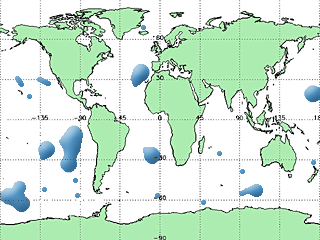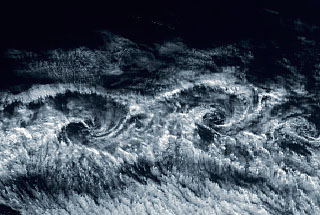
'Kelvin-Helmholtz Instability' Cloud Structure (KHICS)
 The Kelvin-Helmholtz instability results from a turbulence of two air layers lying close to each other, which move with different speed and/or direction. The Kelvin-Helmholtz instability results from a turbulence of two air layers lying close to each other, which move with different speed and/or direction.
It can be assumed that due to the friction force between two air masses, which move with different speed, one (or several) irregularity in the form of penetration of a layer in the other one develops. The penetration can be observed in the form of wave or hill.
Because of the continuous of the air flow, an air element, which is close to some air barrier, moves around it faster than another one, which is more far from the border of air masses.
According to Bernoulli's Principle the pressure beside an air layer with the higher wind velocity is smaller than in the environment. Consequently there is a force, which pulls the barrier shape (wave comb or hill summit) in the direction of the faster air flow.
Close to a wave trough (or a “valley”), air flows more slowly than in the environment, and therefore the ambient pressure is locally higher. This area will be pressed in the opposite direction.
The Kelvin-Helmholtz instability is rarely observed in large air masses.
At most they can be observed over the Southern Hemisphere, where the extra-tropical cyclones have obviously more place and larger speed in comparing to environment. |

